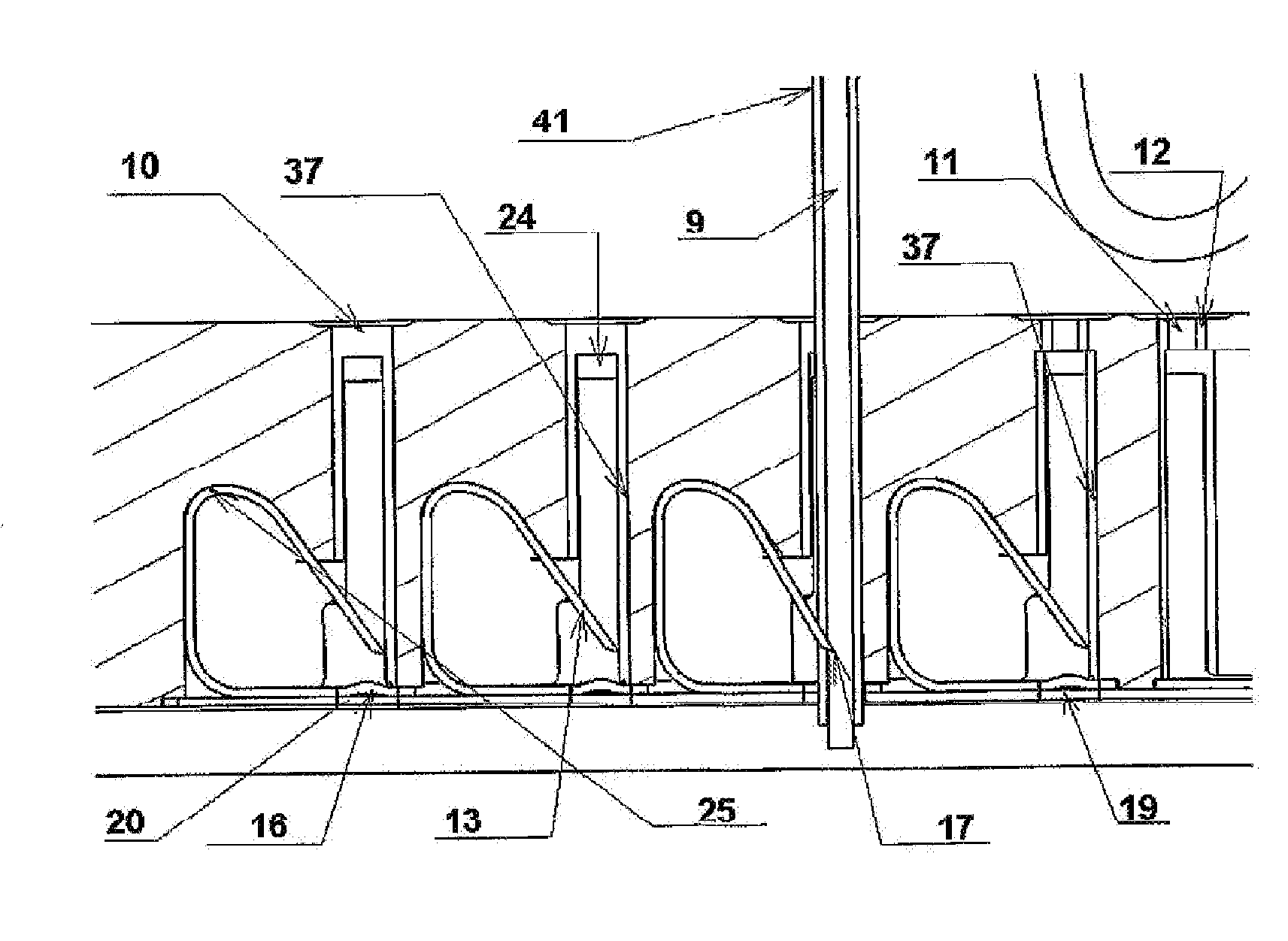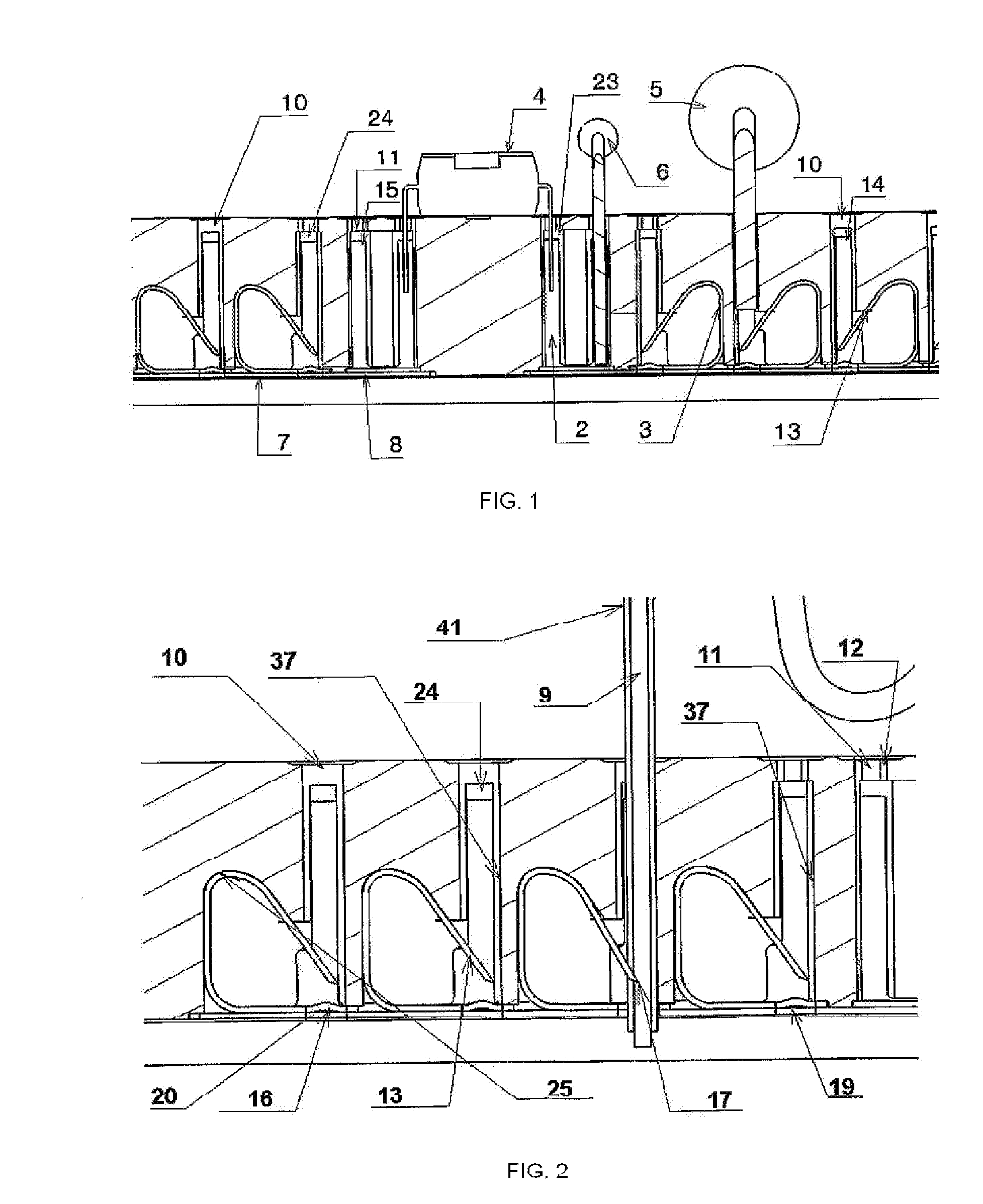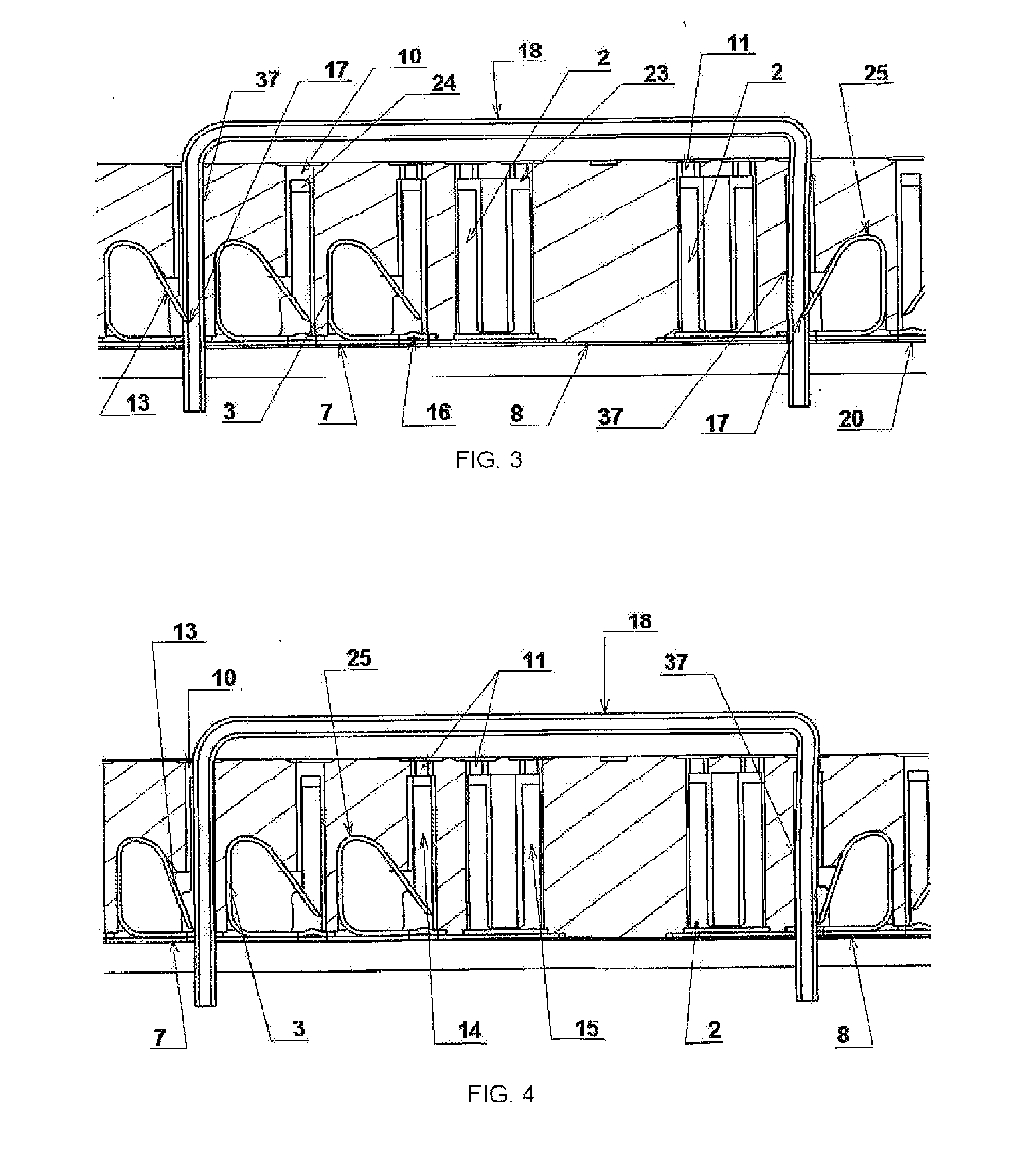Card for interconnecting electronic components using insulated cable or wire
a technology of electronic components and wiring cards, applied in the direction of electrically conductive connections, coupling device connections, electrical apparatus, etc., can solve the problems of increasing the time of operation, circuit reading and understanding is difficult, and the operation consumes a lot of time, so as to save measurement
- Summary
- Abstract
- Description
- Claims
- Application Information
AI Technical Summary
Benefits of technology
Problems solved by technology
Method used
Image
Examples
Embodiment Construction
[0060]FIG. 1 shows a cross view of present card with a number of connected components: resistance (6), diode (5), and one IC (4). Said components are inserted by the large size access boreholes (10) and by regular size access boreholes (11) being on casing surface of present card (1). Upon intending an interconnection of electric or electronic components, they are inserted into the C-shaped connectors (14) clamps or in the clamps of similar connectors to those from prior art (15), being opened and in such opening each clamp leg is housed in the opening and housing grooves of the C-shaped connector (24) clamp, and in the opening and housing grooves of a connector clamp similar but not identical to that from prior art (23) in the casing (1), accordingly; this being performed on each side, each leg and each clamp. In said figure the clamp action of a connector to that from prior art (2) is shown and one C-shaped connector (3) which are short-circuited together with another three C-shap...
PUM
| Property | Measurement | Unit |
|---|---|---|
| size | aaaaa | aaaaa |
| size | aaaaa | aaaaa |
| length | aaaaa | aaaaa |
Abstract
Description
Claims
Application Information
 Login to View More
Login to View More - R&D
- Intellectual Property
- Life Sciences
- Materials
- Tech Scout
- Unparalleled Data Quality
- Higher Quality Content
- 60% Fewer Hallucinations
Browse by: Latest US Patents, China's latest patents, Technical Efficacy Thesaurus, Application Domain, Technology Topic, Popular Technical Reports.
© 2025 PatSnap. All rights reserved.Legal|Privacy policy|Modern Slavery Act Transparency Statement|Sitemap|About US| Contact US: help@patsnap.com



